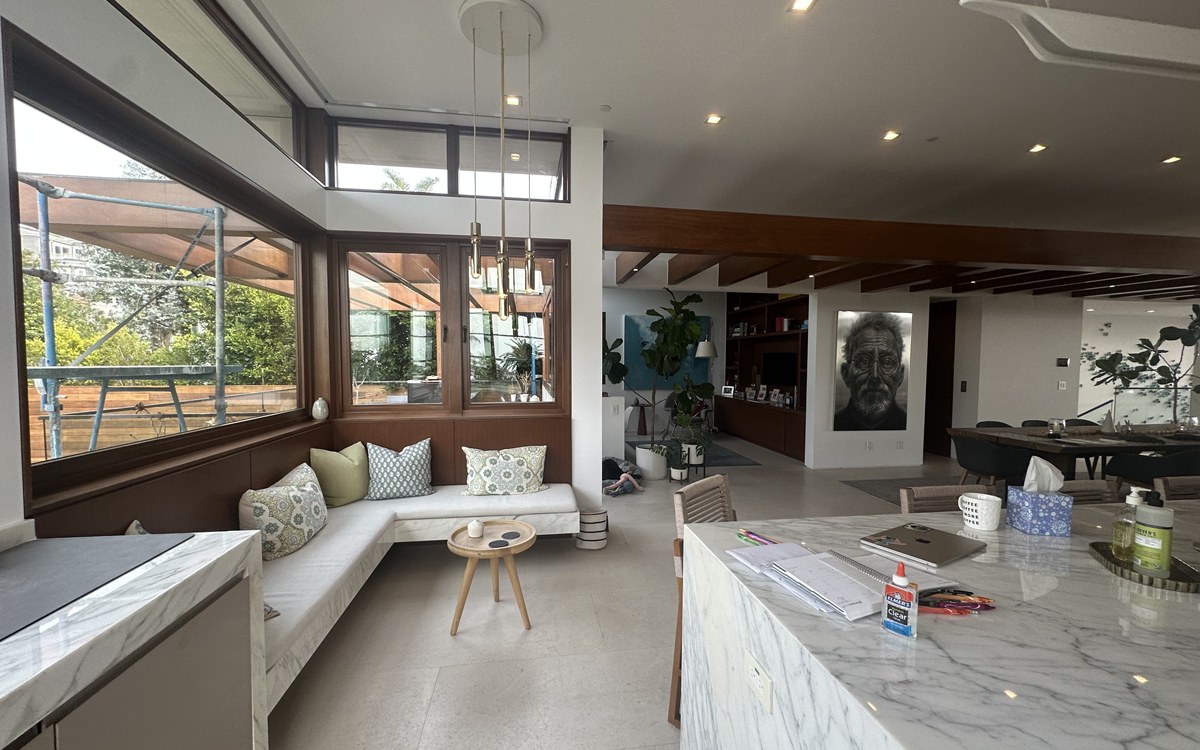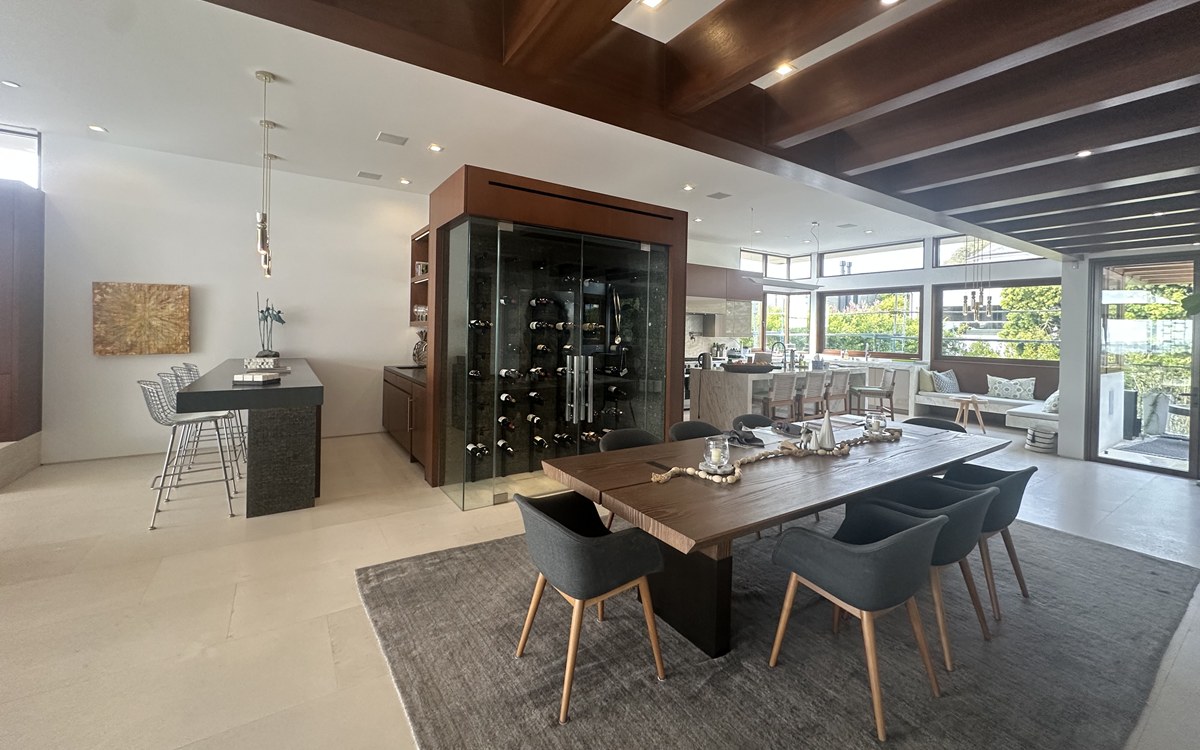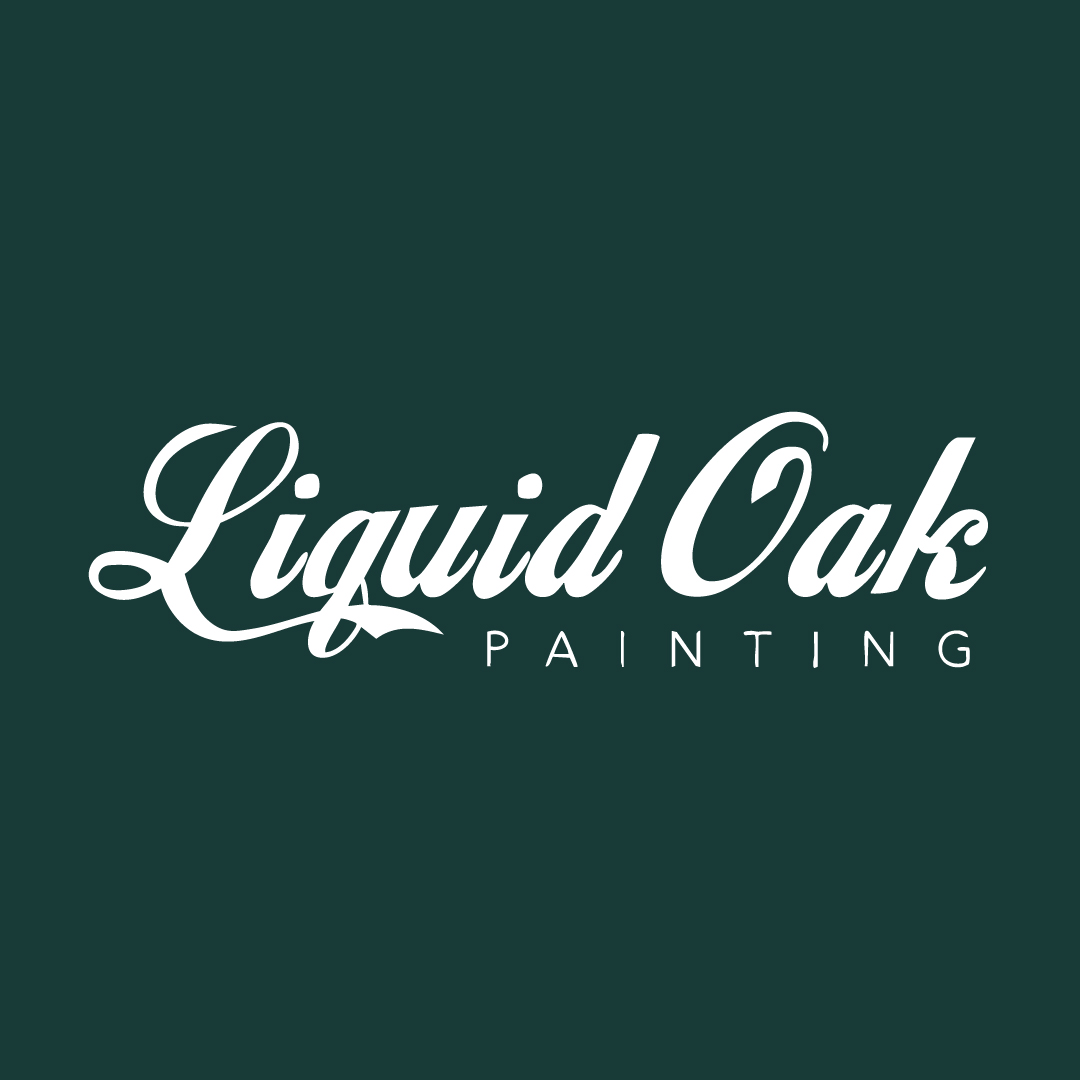When choosing the perfect paint finish for your interior house painting project, the decision often comes down to matte vs satin paint. Both have their unique advantages, and the right choice depends on factors like durability, maintenance, and where you plan to use it. In this guide, we’ll break down everything homeowners need to know to make an informed decision.
Key Takeaways:
- Get a clear breakdown of matte vs satin paint, including their pros, cons, and best uses.
- Know exactly which paint finish suits your home based on durability, maintenance, and room type.
- Learn about cost differences and how to maintain each finish properly to avoid frequent repainting.
- Get tips to ensure your painting project goes smoothly.

What Is Matte Paint?
Matte paint, also known as flat paint, has a smooth, non-reflective finish. It absorbs light rather than reflecting it, which helps to hide imperfections on walls. This makes it a popular choice for living spaces that require a sophisticated, muted look.
Pros of Matte Paint:
- Provides a smooth, elegant appearance: Matte paint offers a refined and modern look that gives walls a velvety, soft finish, making it an excellent choice for contemporary interiors.
- Hides surface imperfections well: Due to its lack of reflectivity, matte paint conceals minor dents, nail holes, and wall texture inconsistencies better than glossy paints.
- Ideal for low-traffic areas: Because it is less durable, matte paint works best in rooms that don’t experience frequent touching or scuffing, such as bedrooms and formal living spaces.
- Creates a cozy and soft ambiance: The non-reflective nature of matte paint helps create a warm, inviting atmosphere by reducing glare and providing a subdued, stylish aesthetic.
Cons of Matte Paint:
- Less durable compared to satin paint: Matte paint is more prone to damage from scratches, stains, and general wear and tear, making it less ideal for high-traffic areas.
- More difficult to clean: Since it has a porous surface, cleaning matte paint can be challenging. Excessive scrubbing can cause discoloration or remove layers of paint.
- Prone to scuffs and marks: Walls painted with matte finishes tend to show fingerprints, smudges, and other marks more easily, requiring frequent touch-ups in busy areas.
What Is Satin Paint?
Satin paint has a soft sheen that reflects some light, giving walls a smooth and slightly glossy finish. It strikes a balance between matte and glossy finishes, offering both durability and a stylish look.
Pros of Satin Paint:
- More durable than matte paint: Satin paint is designed to withstand daily wear and tear, making it an excellent option for high-traffic areas in a home.
- Easier to clean and maintain: Unlike matte paint, satin paint allows for easy cleaning with just a damp cloth or mild detergent, making it more practical for households with children or pets.
- Resistant to moisture and stains: The semi-glossy finish of satin paint makes it more resistant to humidity, spills, and stains, which is ideal for kitchens and bathrooms.
- Works well in high-traffic areas: Due to its durability and ease of maintenance, satin paint is a preferred choice for hallways, stairwells, and children’s rooms where frequent contact is expected.
Cons of Satin Paint:
- Can highlight wall imperfections: Because of its slight sheen, satin paint may make dents, cracks, and uneven textures more noticeable compared to matte finishes.
- Slightly more difficult to touch up compared to matte paint: When applying touch-ups, satin paint may appear inconsistent or patchy due to its reflective properties.
- May not provide the same sophisticated look as matte: While satin paint offers durability, it doesn’t have the same rich, soft appearance as matte finishes, which some homeowners prefer for a more refined aesthetic.
Durability: Which One Lasts Longer?
When it comes to durability, satin paint is the clear winner. Its slightly glossy finish makes it resistant to scuffs, stains, and moisture, making it ideal for areas that see a lot of wear and tear. Matte paint, on the other hand, is more prone to damage and can be challenging to clean without affecting the finish.

Best Rooms for Each Finish
The right choice depends on where you’re applying the paint. Here’s a more detailed guide:
Matte Paint:
- Bedrooms: Ideal for creating a soft, relaxing atmosphere with a modern or cozy feel. Matte paint minimizes glare and gives walls a smooth, velvety appearance.
- Living Rooms: Works well in formal and informal spaces, especially where a sophisticated and elegant look is desired. It also helps conceal minor wall imperfections.
- Ceilings: Since ceilings rarely need frequent cleaning, matte paint is a great choice. It reduces light reflection, preventing unwanted glare.
- Home Offices & Studies: The muted, non-reflective finish helps reduce distractions and adds a refined touch to workspaces.
Satin Paint:
- Kitchens: This finish is excellent for kitchens because it resists grease, stains, and moisture. It’s also easier to wipe down after cooking mishaps.
- Bathrooms: Satin’s water-resistant quality makes it a top pick for bathrooms where humidity and splashes are common.
- Hallways & Entryways: These high-traffic areas are prone to scuffs and marks, making satin paint a durable and practical choice.
- Children’s Rooms & Playrooms: Kids’ rooms tend to get messy, and satin paint allows for easy cleaning while maintaining a warm, inviting look.
- Laundry Rooms & Mudrooms: Since these areas experience moisture and frequent use, satin paint ensures longevity and easy maintenance.
Cost Differences
The price of paint varies by brand and quality, but in general:
- Matte paint is often slightly cheaper than satin paint.
- Satin paint can be a bit more expensive due to its added durability and sheen.
While the upfront cost difference isn’t drastic, the long-term value of satin paint may outweigh the initial savings if you need to repaint often.
Maintenance Tips
Caring for Matte Paint:
- Avoid scrubbing aggressively, as it may remove the paint and cause uneven patches on the wall.
- Use a damp sponge with mild soap for spot cleaning to gently remove dirt without affecting the finish.
- Consider touch-ups rather than heavy cleaning, as matte paint is more susceptible to visible wear and tear.
Caring for Satin Paint:
- Wipe with a damp cloth for easy maintenance and routine cleaning.
- Use a mild detergent for tougher stains to lift dirt without damaging the finish.
- Avoid harsh abrasives such as steel wool or rough sponges, as they can scratch and dull the sheen of satin paint.
Final Verdict: Which Should You Choose?
- If you prefer a soft, elegant look and don’t need heavy durability, go for matte paint.
- If you need a finish that’s durable, easy to clean, and works well in high-traffic areas, satin paint is the better option.
Still Unsure? Let Us Help!
Choosing the right paint finish can make all the difference in your home’s look and longevity. At Liquid Oak Painting, we’re here to make that choice easier! Whether you need expert advice or professional painting services, our team is ready to help.
Give us a call at 213-526-1070 today and let’s bring your vision to life!



